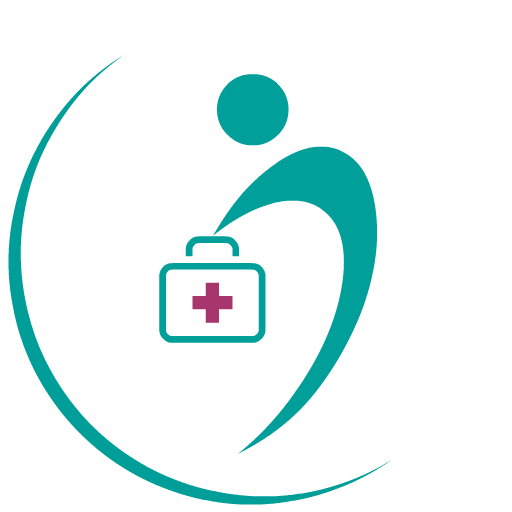Paget's disease of the breast is a rare form of breast cancer that affects the skin and nipple of the breast.
It was first described by Sir James Paget in 1874 and is named after him. While it is relatively uncommon, accounting for less than 5% of all breast cancer cases, understanding its symptoms, causes, and treatment options is crucial for early detection and effective management.
Introduction
Paget's disease of the breast is characterized by changes in the skin and nipple of the breast, often resembling eczema or other skin conditions. It is important to distinguish it from other benign conditions as it is associated with an underlying breast cancer, either ductal carcinoma in situ (DCIS) or invasive breast cancer.
What is Paget's Disease of the Breast?
Paget's disease of the breast is a form of breast cancer that starts in the milk ducts of the breast and spreads to the skin and nipple. The exact cause of this disease is still unknown, but it is believed to be associated with the presence of abnormal cells in the milk ducts. These abnormal cells migrate to the skin and nipple, resulting in the characteristic changes seen in Paget's disease.
Symptoms and Presentation
The most common symptom of Paget's disease of the breast is persistent itching, redness, or scaling of the skin and nipple. Other symptoms may include nipple discharge, a burning sensation, or a lump in the breast. It is important to note that these symptoms may also be caused by other benign conditions, so proper diagnosis is essential.
Causes and Risk Factors
The exact causes of Paget's disease of the breast are still not fully understood. However, several risk factors have been identified. These include age, with the disease most commonly occurring in women over 50, a history of breast cancer or other breast conditions, and certain genetic mutations, such as mutations in the BRCA1 and BRCA2 genes.
Diagnosis
Diagnosing Paget's disease of the breast typically involves a combination of physical examination, imaging tests, and a biopsy. A breast specialist or oncologist will examine the affected breast, looking for characteristic skin changes and nipple abnormalities. Imaging tests, such as mammograms and breast ultrasound, may be performed to evaluate the extent of the disease. A biopsy is necessary to confirm the presence of cancer cells.
Staging and Prognosis
Paget's disease of the breast is staged using the same system as other breast cancers, considering the size of the tumor, lymph node involvement, and presence of metastasis. The prognosis for Paget's disease depends on various factors, including the stage of the disease, the presence of an underlying breast cancer, and the individual's overall health. Early detection and prompt treatment can significantly improve the prognosis.
Treatment Options
The treatment of Paget's disease of the breast typically involves a multidisciplinary approach, including surgery, radiation therapy, systemic therapy, and supportive care. The choice of treatment depends on the extent of the disease, the presence of an underlying breast cancer, and the individual's overall health and preferences.
Surgery
Surgery is a common treatment option for Paget's disease of the breast. The goal of surgery is to remove the cancerous cells and any associated breast tumors. The type of surgery recommended may vary depending on the extent of the disease and whether there is an underlying breast cancer.
One surgical option is a lumpectomy, also known as breast-conserving surgery. During a lumpectomy, the surgeon removes the affected area of the breast, including the abnormal skin and nipple, along with a margin of healthy tissue. This approach is often combined with radiation therapy to ensure the complete removal of cancer cells.
In cases where the disease is more extensive or when there is an underlying breast cancer, a mastectomy may be recommended. A mastectomy involves the complete removal of the breast tissue. Depending on the situation, a simple mastectomy or a modified radical mastectomy may be performed. Reconstruction options can be discussed with a plastic surgeon prior to or after the mastectomy.
Surgery may also involve the removal of nearby lymph nodes to determine if the cancer has spread beyond the breast. This procedure, known as a sentinel lymph node biopsy or axillary lymph node dissection, helps in staging the disease and guiding further treatment decisions.
It is important to note that the choice of surgical approach depends on various factors, including the individual's overall health, preferences, and the recommendations of the healthcare team. A thorough discussion with the medical team can help determine the most appropriate surgical option for each individual case.
Radiation Therapy
Radiation therapy is often used in combination with surgery for Paget's disease of the breast. This treatment involves the use of high-energy radiation to target and kill cancer cells. After surgery, radiation therapy is usually administered to the remaining breast tissue to reduce the risk of cancer recurrence.
External beam radiation therapy is the most common type used for Paget's disease. It delivers radiation from an external machine to the affected area of the breast. The treatment is typically administered daily over a span of several weeks.
Radiation therapy may cause temporary side effects such as fatigue, skin changes, and breast discomfort. These side effects are generally manageable and subside after the completion of treatment. The radiation oncology team will closely monitor and support the individual throughout the treatment process.
Systemic Therapy
Systemic therapy is another important component of the treatment for Paget's disease of the breast. It involves the use of medications that target cancer cells throughout the body, helping to destroy any remaining cancer cells and reduce the risk of recurrence.
The specific systemic therapy options depend on the presence of an underlying breast cancer and the characteristics of the tumor. Hormone therapy is commonly used when there is hormone receptor-positive breast cancer. It works by blocking the effects of hormones, such as estrogen, that can stimulate cancer cell growth.
Chemotherapy may be recommended if there is evidence of aggressive or invasive breast cancer. Chemotherapy uses powerful drugs to kill cancer cells or prevent them from multiplying. The treatment is administered either orally or intravenously, and the duration and number of cycles depend on the individual's situation.
Targeted therapy, which aims to attack specific molecules or pathways involved in cancer growth, may also be used in certain cases. This includes targeted drugs such as trastuzumab for HER2-positive breast cancer.
The choice of systemic therapy depends on various factors, including the individual's overall health, the characteristics of the tumor, and the presence of specific biomarkers. A comprehensive evaluation by the medical team will help determine the most appropriate systemic treatment approach.
Supportive Care
Supportive care plays a crucial role in the overall management of Paget's disease of the breast. It focuses on addressing the physical, emotional, and psychological needs of individuals undergoing treatment.
Pain management is an important aspect of supportive care. Medications or alternative therapies may be recommended to help manage any pain or discomfort associated with the disease or its treatment. This may include over-the-counter pain relievers or prescription medications, as well as complementary therapies like acupuncture or massage.
In addition to pain management, supportive care also involves addressing the emotional and psychological well-being of individuals. A breast cancer diagnosis can be emotionally challenging, and it is important to have access to counseling services or support groups where individuals can share their experiences and receive support from others going through similar situations.
Furthermore, maintaining overall health and well-being through a balanced diet, regular exercise, and sufficient rest is crucial during treatment. A registered dietitian may provide dietary recommendations tailored to the individual's needs, while a physical therapist or exercise specialist can guide individuals in incorporating safe and appropriate physical activity into their routine.
Lifestyle and Coping Strategies
Managing Paget's disease of the breast goes beyond medical treatments. Lifestyle modifications and coping strategies can play a significant role in improving overall well-being and quality of life.
Adopting a healthy lifestyle can help individuals feel more empowered and in control of their health. This includes maintaining a nutritious diet rich in fruits, vegetables, whole grains, and lean proteins. Regular exercise, as recommended by healthcare professionals, can help reduce fatigue, improve strength, and boost mood.
Coping strategies such as stress management techniques, mindfulness exercises, and relaxation techniques can help individuals navigate the emotional challenges associated with the disease. Engaging in activities that bring joy, such as hobbies, spending time with loved ones, or pursuing creative outlets, can also provide a sense of fulfillment and emotional well-being.
It is important for individuals to communicate openly with their healthcare team about any concerns or challenges they may be facing. The medical professionals involved in their care can offer guidance, support, and resources to help address these issues and provide the necessary assistance.
Follow-up and Monitoring
After the initial treatment, regular follow-up appointments and monitoring are essential to assess the individual's progress, detect any potential recurrence or new developments, and provide ongoing support.
Follow-up appointments may include physical examinations, imaging tests such as mammograms or breast ultrasounds, and blood tests to monitor tumor markers. These regular check-ups allow the healthcare team to closely monitor the individual's health and make any necessary adjustments to their treatment plan.
It is important for individuals to attend all scheduled follow-up appointments and communicate any changes or concerns they may have with their healthcare team. Early detection of any recurrence or new developments improves the chances of successful treatment and positive outcomes.
Research and Advances
Ongoing research and advancements in the field of breast cancer continue to improve the understanding and treatment options for Paget's disease. Clinical trials are conducted to explore new therapies, targeted treatments, and improved diagnostic techniques.
Participating in clinical trials can offer individuals access to innovative treatments and contribute to the advancement of medical knowledge. It is important to discuss the possibility of clinical trial participation with the healthcare team to determine if it is a suitable option based on the individual's specific circumstances.
Researchers and medical professionals are continuously working towards better outcomes and advancements in the management of Paget's disease of the breast. Staying informed about the latest research and developments through reputable sources and engaging in discussions with healthcare providers can provide valuable insights and options for individuals affected by the disease.
Conclusion
Paget's disease of the breast is a rare form of breast cancer that affects the skin and nipple. While it represents a small percentage of breast cancer cases, early detection, accurate diagnosis, and appropriate treatment are crucial for optimal outcomes.
Through a combination of surgery, radiation therapy, systemic therapy, and supportive care, individuals with Paget's disease can receive comprehensive treatment tailored to their specific needs. Lifestyle modifications, coping strategies, and regular follow-up care play important roles in improving overall well-being and quality of life. It is essential for individuals to actively participate in their treatment journey, communicate openly with their healthcare team, and seek support from their loved ones and support networks.
While significant progress has been made in the management of Paget's disease of the breast, ongoing research and advancements continue to enhance our understanding of the disease and improve treatment options. Clinical trials offer hope for new therapies and interventions, and individuals may consider participating in these trials under the guidance of their healthcare team.
In conclusion, Paget's disease of the breast is a complex condition that requires a multidisciplinary approach for effective management. Through a combination of surgery, radiation therapy, systemic therapy, and supportive care, individuals can receive personalized treatment to address their specific needs. Lifestyle modifications, coping strategies, and regular follow-up care contribute to overall well-being and long-term outcomes. Staying informed about the latest research and advancements in the field empowers individuals to make informed decisions and actively participate in their treatment journey.
Frequently Asked Questions (FAQs)
1. Is Paget's disease of the breast common?
Paget's disease of the breast is relatively rare, accounting for less than 5% of all breast cancer cases. However, it is important to be aware of its symptoms and seek medical attention if any concerning changes occur.
2. Can men develop Paget's disease of the breast?
Yes, although rare, men can develop Paget's disease of the breast. It is more commonly seen in women, but men should also be aware of any changes in the nipple or breast area and consult a healthcare professional if necessary.
3. Can Paget's disease of the breast be cured?
The treatment and prognosis for Paget's disease of the breast depend on various factors, including the stage of the disease and the presence of an underlying breast cancer. Early detection and prompt treatment can significantly improve outcomes, and many individuals successfully manage the disease with appropriate interventions.
4. How is Paget's disease of the breast different from other breast conditions?
Paget's disease of the breast is unique because it involves changes in the skin and nipple of the breast. It is important to distinguish it from other benign conditions as it is associated with an underlying breast cancer, either ductal carcinoma in situ (DCIS) or invasive breast cancer.
5. Where can I find support and resources for Paget's disease of the breast?
There are various support groups, online communities, and reputable organizations dedicated to providing information and support for individuals with Paget's disease of the breast. Consulting with healthcare professionals and reaching out to these resources can help individuals access the necessary support and guidance throughout their journey.
Blogs
Stay connected to health experts and read what they have to say via DocSmart.
Please sign up to create your own blog





